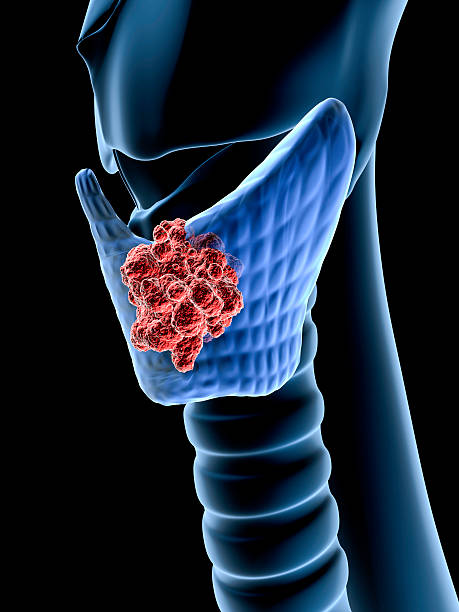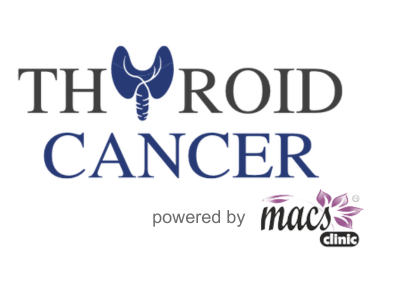Thyroidectomy, a surgical procedure to remove all or part of the thyroid gland, offers a solution that addresses the issues at their source.
According to Dr. Sandeep Nayak, a renowned specialist in thyroid surgery in Bangalore:
“Thyroidectomy can effectively treat thyroid cancer, goiter, and hyperthyroidism. By removing the affected portion of the thyroid, patients often experience relief from their symptoms and get a cure. This significantly improves their quality of life, allowing them to return to normal activities with renewed vitality and confidence.”
Are you ready to take control of your thyroid health? Schedule an evaluation with a qualified thyroid doctor to assess your condition thoroughly.
Let’s uncover the crucial role of neck dissection in thyroid surgery!
What is Neck Dissection?
Neck dissection is a surgical procedure that removes lymph nodes and surrounding tissues in the neck. It is often necessary when cancer has spread beyond the thyroid gland to these nodes. The goal is to remove cancerous cells to prevent further spread and improve patient outcomes.
Neck dissection is crucial for comprehensive cancer management and addressing all potentially affected tissues. It is a meticulous process that requires the expertise of a skilled surgeon to ensure optimal results and patient safety.
Are you curious about when these surgeries combine for better outcomes? Let’s explore the scenarios in which this dual approach shines!
Indications for Combined Thyroidectomy and Neck Dissection
A combined thyroidectomy and neck dissection may be indicated for several reasons, primarily associated with the management of thyroid cancer. Here are the key indications:
For more aggressive forms of thyroid cancer, such as medullary thyroid cancer or anaplastic thyroid cancer. These have a higher likelihood of metastasizing to neck lymph nodes. So, we perform lymph node dissection in all of them.
In cases where the thyroid cancer invades nearby tissues, including muscles or the trachea.
In patients who have recurrent thyroid cancer, especially if previous treatments like surgery or radioactive iodine have failed to control the spread.
When thyroid gland cancer spreads to the lymph nodes in the neck. This is commonly seen in patients with papillary or follicular thyroid carcinoma.
In patients with thyroid cancer who are at high risk for nodal metastases, even if no lymph node metastases are detected at the time of diagnosis in aggressive cancers.

Preparing for Thyroid Surgery
Preparation is crucial for a successful surgery. In the days leading up to the procedure, patients should:
Undergo a thorough medical evaluation, including blood tests and imaging.
Adjust or stop certain medications as advised by the doctor.
Fast for at least 8 hours before surgery to ensure an empty stomach.
Arrange for transportation and post-operative care at home.
Adhere to all pre-operative instructions provided by the healthcare team.

Proper preparation ensures that the surgery proceeds smoothly and reduces the risk of complications.
Let’s guide you through the step-by-step journey of thyroidectomy with neck dissection!
The Surgical Procedure
The goal of thyroidectomy with neck dissection is to ensure the complete removal of cancerous tissue while minimizing the risk of recurrence and managing potential complications. The surgical procedure involves several steps:
Anesthesia:
The surgeon administers general anesthesia to the patient to ensure they are pain-free throughout the procedure.
Incision:
The conversational surgery involves making a precise small incision in the neck area, allowing access to the thyroid gland and surrounding structures. However, RABIT which is the robotic thyroidectomy developed by Dr Sandeep Nayak, the incisions are well hidden and are not in front of the neck.
Thyroidectomy:
The surgeon executes a meticulous removal of all or part of the thyroid gland. Care is taken to ensure the preservation of adjacent structures and minimize complications. The important structures are the parathyroid gland and the nerve.
Neck Dissection:
The thyroid specialist carefully removes the lymph nodes and surrounding tissues as required. This ensures thorough eradication of cancerous cells and reduces the risk of recurrence. The technique can be performed using traditional open surgery or through robotic-assisted approaches.
Lymph node dissection: Robotic & Open:
Open lymph node dissection involves making a larger incision to access the lymph nodes. This method provides direct visualization and access to the lymph nodes, allowing the surgeon to thoroughly remove nodes that may be affected by cancer.
Robotic lymph node dissection used as a part of RABIT also called RIA-MIND, to perform the dissection through smaller incisions using robotic instruments. The surgeon controls these instruments from a console, with the advantage of high-definition, 3D visualization of the surgical site.
Closure:
The final step involves closing the incision using sutures to promote optimal healing and placing a drain to prevent fluid buildup and promote proper drainage.

Potential Risks and Complications
While thyroidectomy with neck dissection is generally safe, there are potential risks and complications:
- Risk of infection at the surgical site.
- Potential for excessive bleeding during or after surgery.
- Risk of damage to nerves controlling vocal cords and other nerves.
- Low calcium levels due to parathyroid gland disturbance.
- Visible scars on the neck post-surgery when performed by open surgery.
Understanding these risks helps patients make informed decisions and be prepared for possible outcomes.
Are you or a loved one is facing a thyroid diagnosis that might require surgery? Don’t navigate this challenging time alone. Contact a specialized surgical team for proper support, information, and care you need to make informed decisions about your health.
For more information on thyroidectomy with neck dissection, please visit our FAQ section.
FAQ Section
What is the thyroid gland and what does it do?
The thyroid gland, a small, butterfly-shaped gland is situated in the neck, just below the Adam’s apple. It generates hormones that control metabolism, energy levels, and numerous other physiological processes.
What are common thyroid disorders?
Common thyroid disorders include hypothyroidism (underactive thyroid), hyperthyroidism (overactive thyroid), thyroid nodules, goiter (enlarged thyroid gland), and thyroid cancer.
How are thyroid disorders diagnosed and treated?
Thyroid disorders are diagnosed through blood tests to measure thyroid hormone levels, imaging studies such as ultrasound, and sometimes biopsy of thyroid nodules. Treatment options vary depending on the specific disorder. They may include medication, radioactive iodine therapy, thyroid surgery, or a combination of these approaches.
What are the symptoms of a thyroid tumor?
Thyroid tumor symptoms can vary but may include neck swelling. In advanced cases difficulty breathing or swallowing, voice changes, or persistent hoarseness may be seen.
What is involved in surgical thyroidectomy?
Surgical thyroidectomy is the complete or partial removal of the thyroid gland to treat thyroid disorders such as thyroid cancer, goiter, or hyperthyroidism. The procedure is performed under general anesthesia and may involve making an incision in the neck to access the thyroid gland and is often performed robotically now a days.

